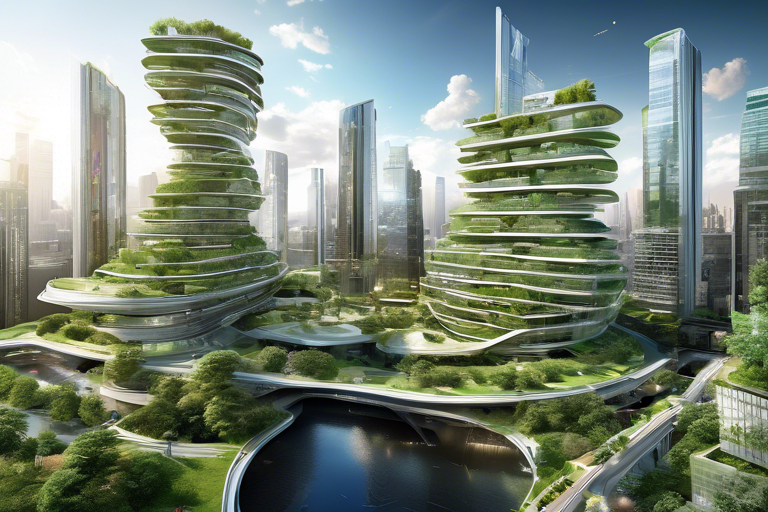In today’s rapidly evolving world, innovation is the key to success in almost every industry. The construction and building sector is no exception. With the advent of new technologies, the way we design, construct, and maintain buildings is undergoing a significant transformation. Embracing these cutting-edge building technologies not only improves efficiency and sustainability but also enhances the overall quality of our built environment. In this article, we will explore some of the most exciting innovations in the field of construction and their potential impact on the industry.
The Rise of 3D Printing in Construction
One of the most revolutionary Cutting-Edge Building Technologies in the construction industry is 3D printing. This technology has the potential to completely transform the way we build structures. 3D printing, also known as additive manufacturing, involves creating three-dimensional objects by layering materials on top of each other. While 3D printing has been used in various industries, its application in construction is relatively new but rapidly gaining traction.
One of the key advantages of 3D printing in construction is its ability to reduce material waste. Traditional construction methods often result in significant material wastage, leading to increased costs and environmental impact. With 3D printing, materials can be precisely deposited only where they are needed, minimizing waste and optimizing resource utilization.
Furthermore, 3D printing allows for the creation of complex and intricate designs that would be challenging or even impossible to achieve with traditional construction methods. This opens up new possibilities for architects and designers to create innovative and visually stunning structures.
One notable example of 3D printing in construction is the “Office of the Future” in Dubai. Completed in 2016, this 2,700 square foot building holds the distinction of being the world’s first fully functional 3D-printed office. The entire structure, including the walls, floors, and furniture, was 3D printed using a special mixture of cement and other materials. This project showcased the potential of 3D printing in construction and paved the way for further exploration of this technology.
Smart Buildings and the Internet of Things (IoT)
Another area of innovation in the construction industry is the integration of smart technologies and the Internet of Things (IoT) into buildings. Smart buildings are designed to be highly efficient, sustainable, and user-friendly, thanks to the integration of various sensors, devices, and systems.
The IoT allows different components of a building, such as lighting, heating, ventilation, and security systems, to communicate with each other and be controlled remotely. This connectivity enables buildings to optimize energy consumption, improve occupant comfort, and enhance overall operational efficiency.
For example, sensors embedded in a smart building can monitor occupancy levels in different areas and adjust lighting and HVAC systems accordingly. This not only reduces energy waste but also creates a more comfortable environment for occupants. Additionally, smart buildings can detect and respond to maintenance issues in real-time, allowing for proactive maintenance and minimizing downtime.
One of the most well-known examples of a smart building is the Edge in Amsterdam. Completed in 2015, this office building is considered one of the most sustainable and technologically advanced buildings in the world. It utilizes a vast array of sensors and IoT devices to optimize energy usage, monitor indoor air quality, and provide personalized experiences for occupants.
Green Building Technologies for Sustainability
In recent years, there has been a growing emphasis on sustainability in the construction industry. Green building technologies aim to minimize the environmental impact of buildings throughout their lifecycle, from design and construction to operation and maintenance.
One of the key aspects of green building technologies is energy efficiency. Buildings account for a significant portion of global energy consumption, and improving their energy efficiency can have a substantial impact on reducing greenhouse gas emissions. Technologies such as advanced insulation, energy-efficient lighting systems, and smart energy management systems can significantly reduce a building’s energy consumption.
Renewable energy sources also play a crucial role in green building technologies. Solar panels, wind turbines, and geothermal systems can generate clean and sustainable energy to power buildings. Integrating these renewable energy sources into the design and construction of buildings not only reduces their carbon footprint but also provides long-term cost savings.
Furthermore, green building technologies focus on using sustainable and environmentally friendly materials. For example, the use of recycled or locally sourced materials reduces the carbon footprint associated with transportation and manufacturing. Additionally, innovative materials such as self-healing concrete and bio-based insulation offer improved durability and reduced environmental impact.
The Future of Building Technologies
The innovations discussed in this article are just a glimpse into the future of building technologies. As technology continues to advance, we can expect even more exciting developments in the construction industry.
Some of the emerging trends in cutting edge building technologies include:
- Robotics and automation: Robots can perform repetitive and labor-intensive tasks, improving efficiency and safety on construction sites.
- Augmented reality (AR) and virtual reality (VR): These technologies enable architects, engineers, and contractors to visualize and simulate building designs before construction, reducing errors and improving collaboration.
- Artificial intelligence (AI): AI-powered systems can analyze vast amounts of data to optimize building performance, predict maintenance needs, and enhance occupant comfort.
- Nanotechnology: Nanomaterials offer unique properties, such as self-cleaning surfaces and enhanced insulation, which can revolutionize the construction industry.
In conclusion, embracing innovation in the construction industry is essential for staying competitive and addressing the challenges of the future. Technologies such as 3D printing, smart buildings, and green building technologies offer tremendous potential to improve efficiency, sustainability, and the overall quality of our built environment. By adopting these cutting-edge building technologies, we can create a more sustainable and resilient future for generations to come.









